Showing 1-20 of 51 results
 western.sare.org news can-less-fertilizer-create-higher-sugar-yields-testing-a-win-win-hypothesis
western.sare.org news can-less-fertilizer-create-higher-sugar-yields-testing-a-win-win-hypothesis Can Less Fertilizer Create Higher Sugar Yields? Testing a Win-Win Hypothesis
For a sugarbeet grower, when someone tells you that you can reduce your nitrogen fertilizer inputs and costs by 20 percent and increase your crop quality and sugar yield, there’s only one logical response. Prove it. That’s just what the Western Sugar Cooperative set out to do with a Western SARE Professional + Producer grant […]
 western.sare.org news farmstay-website-helps-producers-profit
western.sare.org news farmstay-website-helps-producers-profit Farmstay Website Helps Producers Profit
Fifteen years ago, Western SARE awarded Oregon farmer Scottie Jones to develop a Northwestern Farmstay USA website. Today, the website highlights farms in 16 regions around the country and protectorates and includes 306 farms and ranches. What’s a farm stay? As part of her Farmer/Rancher project, Scottie defined a farm stay as overnight lodging on […]
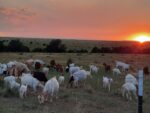 western.sare.org news reducing-predation-in-multi-species-grazing
western.sare.org news reducing-predation-in-multi-species-grazing Reducing Predation in Multi-Species Grazing
New Mexico rancher Sydney Franz tested two approaches to kidding goats for economics and safety and found a clear winner. Sydney Franz moved her goat ranch, K&C Boer Goats, from central Texas to Mora County, N.M. to partner with Turner Ranches. Their dream was to establish multi-species grazing for land restoration and improved profitability. “In […]
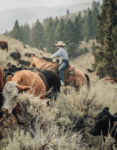 western.sare.org news range-riders
western.sare.org news range-riders Range Riders
Most Western SARE research projects use science to develop new knowledge, insights or practices to help farmers and ranchers in their quest to be more successful and sustainable. Some, though, rediscover and refine old knowledge – like the effectiveness of range riding to protect livestock from predators like wolves, mountain lions and bears. “It’s fascinating […]
 western.sare.org news dr-darrell-donahue-joins-as-regional-director
western.sare.org news dr-darrell-donahue-joins-as-regional-director Dr. Darrell Donahue Joins as Regional Coordinator
Montana State University (MSU) is pleased to announce that Dr. Darrell Donahue has been hired as the Western Sustainable Agriculture Research and Education (Western SARE) Regional Coordinator, effective September 1. Dr. Donahue comes to MSU most recently from West Virginia University, where he served as Special Assistant to the Provost and President, following four years […]
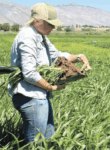 western.sare.org news growing-green-in-the-nevada-desert
western.sare.org news growing-green-in-the-nevada-desert Growing Green in the Nevada Desert
When outsiders think of Nevada, they picture the garish lights of Las Vegas or perhaps red desert sands. But Nevada has a green side, too.
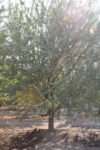 western.sare.org news sustainable-agriculture-action-plans-funded
western.sare.org news sustainable-agriculture-action-plans-funded Sustainable Agriculture Action Plans Funded
Western SARE funded two Sustainable Agriculture Action Plan (SAAP) grants for a total of $50,000. The funding is intended for projects leading a consultative process and creating a Sustainable Agriculture Action Plan that documents the research, regulatory, infrastructure, and educational needs and priorities required to increase sustainable agriculture practices in a specific industry/commodity or geographical […]
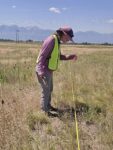 western.sare.org news learning-how-bison-grazing-impacts-rangelands-and-invasive-grasses
western.sare.org news learning-how-bison-grazing-impacts-rangelands-and-invasive-grasses Learning How Bison Grazing Impacts Rangelands and Invasive Grasses
The 19,000-acre Bison Range on the Flathead Indian Reservation is the traditional homeland of the Confederated Salish and Kootenai Tribes. Here, the Salish, Kootenai, and Pend d’Oreilles tribes have focused on land restoration, soil health improvement, and invasive species containment in response to climate change. Invasive annual grasses, particularly Ventenata dubia, pose significant threats to […]
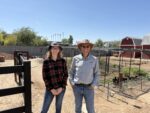 western.sare.org news training-for-the-future-of-arizonas-small-scale-agriculture
western.sare.org news training-for-the-future-of-arizonas-small-scale-agriculture Training for the Future of Arizona’s Small-Scale Agriculture
When supply chains collapsed and grocery shelves sat empty in the first years of the COVID pandemic, many people got interested in growing their own food. Most of those didn’t have access to dozens or hundreds of acres of land. What land they could find were small urban plots, or suburban backyards, or maybe a […]
 western.sare.org news creating-fungal-compost
western.sare.org news creating-fungal-compost Creating Fungal Compost
A former Chicago science teacher turned Colorado farmer, Rick Bieterman isn’t afraid of a challenge. Start with the location of his Watershed Ranch near Buena Vista in central Colorado. “Soil quality out here is pretty terrible,” he said. “Organics are way low. We’re right next to the Arkansas River, so most of our fields are […]
 western.sare.org news light-it-up-using-uv-light-to-kill-powdery-mildew-in-grapes
western.sare.org news light-it-up-using-uv-light-to-kill-powdery-mildew-in-grapes Light it Up! Using UV Light to Kill Powdery Mildew in Grapes
Instead of relying solely on fungicides to control powdery mildew on winegrapes, growers may one day – and one day reasonably soon – have an effective non-chemical option: light. Specifically, light in the form of spore-killing ultraviolet UV-C radiation, delivered directly to the plant by a self-driving tractor moving through vineyard rows autonomously at night. […]
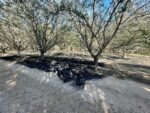 western.sare.org news measuring-biochars-benefits-for-healthy-orchard-soils
western.sare.org news measuring-biochars-benefits-for-healthy-orchard-soils Measuring Biochar’s Benefits for Healthy Orchard Soils
As the California agricultural community seeks new tools and practices critical for adapting to a changing climate, the American Farmland Trust partnered with a Madera County almond grower, conservation districts, and the University of California at Merced to conduct a field demonstration project and experiment on the application of biochar and its effects on soil […]
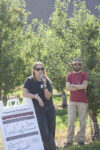 western.sare.org news breaking-the-barriers-to-ipm-adoption-in-wenatchee-pears
western.sare.org news breaking-the-barriers-to-ipm-adoption-in-wenatchee-pears Breaking the Barriers to IPM Adoption in Wenatchee Pears
For all the promise, potential and profound benefits integrated pest management can bring, there’s also this harsh reality: IPM only works if people practice it. In some pear-growing regions in the Pacific Northwest, IPM is a widely accepted, effective and economical way to manage pear psylla and codling moth, the crop’s key insect pests. But […]
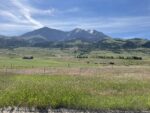 western.sare.org news a-new-tool-for-managing-invasive-grasses-in-montana
western.sare.org news a-new-tool-for-managing-invasive-grasses-in-montana A New Tool for Managing Invasive Grasses in Montana
Invasive annual grasses, such as cheatgrass and ventenata, are reducing the abundance of native grasses that livestock producers depend on in the semi-arid rangelands of southwestern Montana. At the current low-to-moderate levels of invasion, it’s crucial to begin targeted management before invasive populations become too advanced. To guide efforts to slow or halt annual grass […]
 western.sare.org news impacts-of-compost-application-on-the-drought-resiliency-of-rangeland
western.sare.org news impacts-of-compost-application-on-the-drought-resiliency-of-rangeland Impacts of Compost Application on the Drought Resiliency of Rangeland
Severe droughts, expected to increase due to climate change, pose threats to California’s rangelands. Ranchers and rangeland managers are facing decreased livestock forage production, reduced biodiversity, and soil degradation. A previously funded Western SARE project (grant number OW19-349) found that compost amendments provide benefits to soils and forage productivity, including greater resilience to drought. However, […]
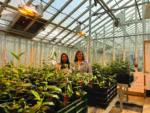 western.sare.org news propagating-tea-plants-for-the-west
western.sare.org news propagating-tea-plants-for-the-west Propagating Tea Plants for the West
Tea is one of the most popular drinks in the world, second only to water in consumption. In America, you can find it in more than 80 percent of households. Finding it growing in U.S. soil is another story. Tea is produced on less than 100 acres in America, mostly in Hawaii and the South. […]
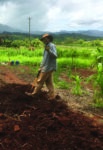 western.sare.org news hawaii-research-examines-ecological-pest-management-and-values-driven-farming
western.sare.org news hawaii-research-examines-ecological-pest-management-and-values-driven-farming Hawaii Research Examines Ecological Pest Management and Values-Driven Farming
Agricultural researchers often measure success in terms of higher yields or higher profits, but a new project in Hawaii is looking at a third dimension of success: Growers’ personal values. “A lot of farmers make the transition to organic partially for commercial reasons, but it’s also a values-driven decision,” said Ben Wiseman, a third-year PhD […]
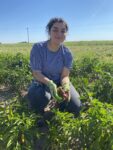 western.sare.org news studying-the-ecology-of-fear-to-protect-chile-in-colorado
western.sare.org news studying-the-ecology-of-fear-to-protect-chile-in-colorado Studying the Ecology of Fear to Protect Chile in Colorado
Tiny aphids are causing outsized losses for chile pepper growers in Colorado, even though the insects don’t feed on that particular crop and don’t linger in it. Instead, aphids move through chile fields, especially after nearby alfalfa fields are cut. That wasn’t a problem until 2019 when alfalfa mosaic virus appeared in southern Colorado. Aphids […]
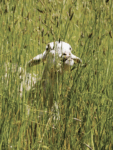 western.sare.org news targeted-grazing
western.sare.org news targeted-grazing Targeted Grazing
Wildfires throughout the West are growing more severe. Fire season starts earlier, lasts longer and claims more lives and property along the way. Grazing is one of the most effective, cost-efficient tools available to lessen fire spread and severity. And now, thanks to a recent Western SARE-supported project, grazing has become even more useful to […]
 western.sare.org news boosting-beneficial-insects-in-oregons-cherry-orchards
western.sare.org news boosting-beneficial-insects-in-oregons-cherry-orchards Boosting Beneficial Insects in Oregon’s Cherry Orchards
Eighty percent of Oregon’s cherries are produced in the Mid-Columbia Basin. Typically, when new orchards are planted, farmers leave the ground under the trees bare or plant grass. Farmers also regularly apply chemicals to control insect pests such as spotted wing drosophila, thrips, and leafhoppers, among others. However, planting mixed cover crops that include flowering […]